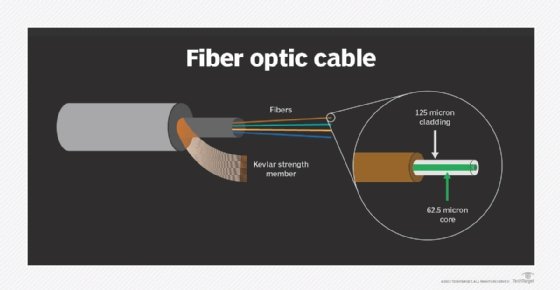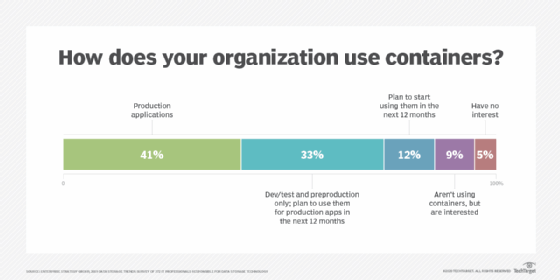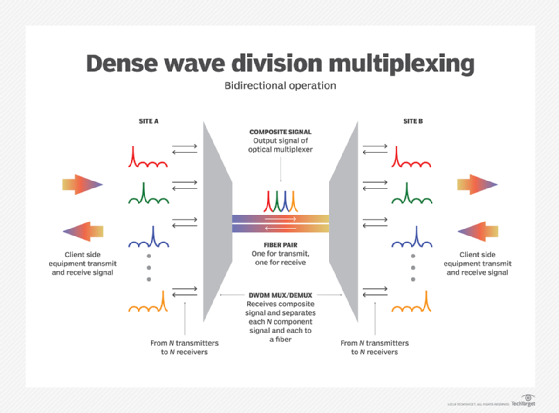Synchronous Digital Hierarchy (SDH)
What is Synchronous Digital Hierarchy (SDH)?
Synchronous Digital Hierarchy (SDH) is a group of fiber optic transmission rates that transport digital signals with different capacities. SDH technology enables low-bit rate data streams to combine with high-rate data streams. Furthermore, as the whole network is synchronous, it enables users to embed and extract individual bit streams from high-rate data streams relatively easily.
SDH is the International Telecommunication Union's Telecommunication Standardization Sector version of the Synchronous Optical Network (SONET) standard. Both technologies provide faster and cheaper network interconnections than traditional Plesiochronous Digital Hierarchy (PDH) equipment.
SDH is used in transmission systems for broadband Integrated Services Digital Network and for transporting Asynchronous Transfer Mode cells, Ethernet aggregations, PDH signals, storage area network signals and other communication signals.
SDH systems were developed in the late 1980s and early 1990s to replace PDH technology. The primary goal was to eliminate potential synchronization issues for bulk data and telephone exchanges. The data transfer rate also increased in a simple and more flexible optical fiber-based network infrastructure.
In digital telephone transmission, synchronous means the bits from one call are carried within one transmission frame. Plesiochronous means almost -- but not -- synchronous or a call that is extracted from more than one transmission frame.

What is the difference between PDH technology and SDH transmission?
PDH technology came with complex multiplexing -- bit stuffing or interleaving -- where additional bits of data are stuffed into the data stream to achieve synchronicity. High transmission bandwidth costs also constrained PDH.
By contrast, SDH technology ushered in an era of multiplexing and synchronization without bit stuffing. Instead, the telecommunications industry based SDH systems on byte interleaving that ensures exact timings, while providing a similar level of flexibility.
SDH uses the following Synchronous Transport Modules (STMs) and rates:
- STM-1 (155 megabits per second)
- STM-4 (622 Mbps)
- STM-16 (2.5 gigabits per second)
- STM-64 (10 Gbps)
How does Synchronous Digital Hierarchy work?
On a synchronously clocked network, SDH combines a bit rate of b with n signals to create data streams with bit rates of n x b. This differs significantly from PDH, as PDH comes with individual transmission paths that have minimal clock discrepancies.
The synchronous mode in SDH enables low-order multiplex systems to be added and dropped from higher hierarchy levels. For example, this is how communication links in telephone systems operate. It achieves all this in accordance with the standard that recognizes different hierarchies, such as STM-1, STM-4, STM-16 or STM-64.
The data is transparently transported over the SDH network in containers. In this scenario, users can reserve approximately 5% of the gross data rate for operations, administration and maintenance purposes.
SDH basically works with the software running on the network. It often uses Transaction Language 1/Q3 protocols to transport network management data between the system terminal and SDH equipment. Finally, it transports network management data between SDH systems using dedicated embedded data communications channels. So, users can achieve SDH within the section and line overhead.
SDH also uses connections based on fiber optic cables, copper lines, and satellite and directional radio links on the physical layer. Regenerators refresh muted or distorted signals, and the multiplexers combine the signals into high-bit rate data streams on the superior layer. However, users can also use virtual containers to transport individual containers of data.
It enables the control mapping of the various signals of different bit rates as well.

What are key advantages of using SDH technology?
SDH is more extensive and less expensive than traditional PDH technologies. Other benefits of using SDH systems include the following:
- It consistently uses more simplified multiplexing and demultiplexing techniques.
- The optical fiber bandwidth can increase without limit.
- It has improved maintenance protocols with easy growth to higher bit rates.
- Rings provide switching protection to data traffic.
- It quickly interconnects with various networks.
- It has a comprehensive network management system.
- It has a flexible self-healing network.
- It can transport existing PDH, broadband and broadcast signals.
- It continues to remain popular within telecommunications networks and operators.
- It enables rapid recovery from failure.
- It offers network transmission services on local area networks for interactive multimedia, like video conferencing.
- It supports multiple operators or vendors.
- It supports multipoint networking.

What are key disadvantages of using SDH technology?
SDH also has a few drawbacks, and while pros far outweigh the cons, these include the following:
- Complexity is increased by directly adding and dropping lower-rate signals that were archived using pointers.
- It demands complicated SDH equipment to manage different traffic types and options.
- It provides a lower bandwidth utilization ratio.
- It does not carry E2 because the container is unavailable.
- It is largely software-based and is vulnerable to cyber attacks.







